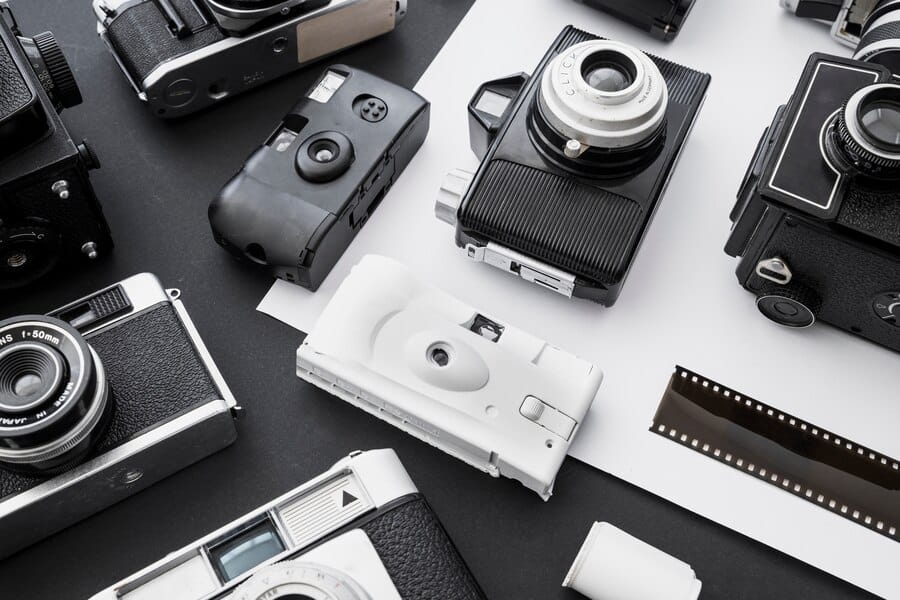The Fujifilm X-Pro2 is celebrated for its unique features, blending retro aesthetics with modern performance. But how does it stack up against other popular cameras like the Fujifilm X-T2, Sony a7 III, or Canon EOS R? Each model brings something different to the table, catering to distinct photography needs. This guide dives into the key comparisons to help you make an informed choice based on your style and requirements.
Fujifilm X-Pro2 vs. Fujifilm X-T2
While the X-Pro2 and X-T2 share many internal components, they are designed for different audiences.
Key Differences
- Viewfinder System
- X-Pro2: Features a hybrid viewfinder (optical and electronic), ideal for photographers who value a rangefinder-style experience.
- X-T2: Comes with an electronic-only viewfinder, offering higher resolution and refresh rates for precision shooting.
- Body Design
- X-Pro2: Rangefinder-style body with a more compact and classic design.
- X-T2: DSLR-like design with a larger grip, suited for those who prefer traditional ergonomics.
- Target Audience
- X-Pro2: Geared toward street and documentary photographers.
- X-T2: Appeals to versatile shooters, especially those interested in action and wildlife photography.
Verdict
Choose the X-Pro2 if you want a retro aesthetic and a hybrid viewfinder. Opt for the X-T2 if you need a higher-resolution EVF and DSLR-style handling.
Fujifilm X-Pro2 vs. Sony a7 III

The Sony a7 III is a full-frame mirrorless camera that often gets compared to APS-C models like the X-Pro2 due to its versatility and price point.
Key Differences
- Sensor Size
- X-Pro2: APS-C X-Trans CMOS III sensor.
- Sony a7 III: Full-frame sensor with better dynamic range and low-light performance.
- Autofocus
- X-Pro2: 273 focus points, suitable for most photography needs.
- Sony a7 III: 693 phase-detection AF points, excelling in action and sports photography.
- Video Capabilities
- X-Pro2: Limited video functionality, focused primarily on still photography.
- Sony a7 III: Advanced 4K video recording with superior quality.
- Size and Portability
- X-Pro2: Smaller and lighter, making it more portable.
- Sony a7 III: Heavier and bulkier due to its full-frame sensor and larger lenses.
Verdict
Choose the X-Pro2 for its portability, unique film simulations, and street photography vibe. The Sony a7 III is better for those prioritizing low-light performance, advanced video, and autofocus capabilities.
Fujifilm X-Pro2 vs. Canon EOS R
Canon’s EOS R is an entry into the full-frame mirrorless space, often compared to the X-Pro2 due to their overlapping price ranges.
Key Differences
- Lens Ecosystem
- X-Pro2: Benefits from Fujifilm’s extensive lineup of high-quality APS-C lenses.
- EOS R: Limited RF lens lineup, but offers compatibility with EF lenses via an adapter.
- User Interface
- X-Pro2: Traditional dials and tactile controls, appealing to photographers who prefer manual adjustments.
- EOS R: Features a touchscreen and customizable touch bar for modern usability.
- Build Quality
- X-Pro2: Weather-sealed and rugged, designed for travel and outdoor photography.
- EOS R: Lightweight but not as durable under harsh conditions.
- Sensor
- X-Pro2: APS-C sensor with excellent image quality for its size.
- EOS R: Full-frame sensor, offering better depth-of-field control and high ISO performance.
Verdict
The X-Pro2 is ideal for those who value tactile controls, portability, and Fujifilm’s lens ecosystem. The EOS R is a great choice for users transitioning from Canon DSLRs who need full-frame performance.
Fujifilm X-Pro2 vs. Leica Q2

For photographers drawn to rangefinder-style cameras, the Leica Q2 often enters the conversation.
Key Differences
- Price
- X-Pro2: Affordable, offering great value for its features.
- Leica Q2: Significantly more expensive, catering to luxury buyers.
- Lens Flexibility
- X-Pro2: Interchangeable lens system with a wide range of Fujifilm lenses.
- Leica Q2: Fixed 28mm f/1.7 lens, limiting versatility.
- Build Quality
- X-Pro2: Durable and weather-sealed.
- Leica Q2: Also weather-sealed, but with a more premium build and minimalist design.
- Image Quality
- X-Pro2: Excellent for an APS-C sensor.
- Leica Q2: Full-frame sensor with exceptional image quality and resolution.
Verdict
The X-Pro2 is a more practical choice for photographers who want flexibility and value. The Leica Q2 is for those willing to pay a premium for luxury and simplicity.
Conclusion
The Fujifilm X-Pro2 stands out for its hybrid viewfinder, tactile controls, and film simulations, making it a fantastic choice for street and travel photographers. While it doesn’t match the full-frame performance of models like the Sony a7 III or Canon EOS R, it excels in portability, aesthetics, and creative tools. Whether you’re looking for a camera to capture fleeting street moments or create professional-grade portraits, the X-Pro2 holds its own in a competitive market.
FAQs
How does the X-Pro2 compare to the X-T4?
The X-T4 offers in-body stabilization and advanced video features, while the X-Pro2 focuses on a rangefinder experience and portability.
Is the Fujifilm X-Pro2 good for video?
The X-Pro2 is not designed for video enthusiasts. Its strengths lie in still photography, particularly for street and documentary styles.
Can the X-Pro2 compete with full-frame cameras?
While the X-Pro2 has excellent image quality for an APS-C sensor, full-frame cameras like the Sony a7 III offer better dynamic range and low-light performance.
What makes the X-Pro2 unique?
Its hybrid viewfinder, retro-inspired design, and film simulations make it a standout choice for photographers seeking a creative and tactile experience.
Is the X-Pro2 still worth buying in 2024?
Yes, for photographers who value its unique features and don’t need cutting-edge video or autofocus technology, the X-Pro2 remains a compelling option.
What’s the best use case for the Fujifilm X-Pro2?
The X-Pro2 shines in street photography, travel, and portraiture, thanks to its portability, lens ecosystem, and creative film simulations.






